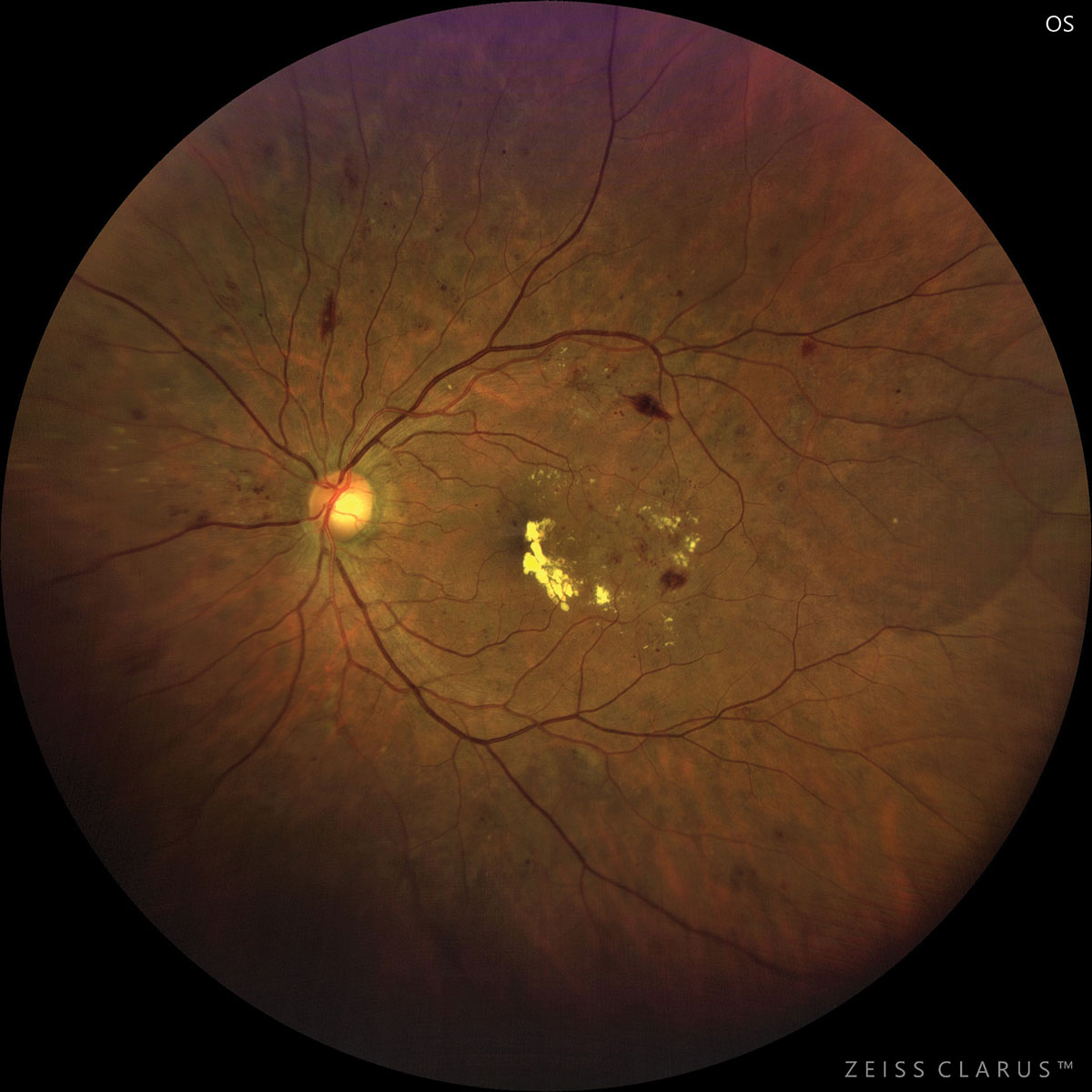 |
|
In this study setting, anti-VEGF wasn’t the only therapy option, as it is in most clinical and many other real-world studies. The authors say this reflects the real-world clinical setting and is valuable data since scenarios such as low response, cardiovascular risk and patient financial burden often influences choice of therapy, leading to alternate options such as corticosteroids, macular photocoagulation and vitrectomy. Photo: Jay Haynie, OD. Click image to enlarge. |
Anti-VEGF therapy has established itself as a crucial treatment modality for diabetic macular edema (DME) in the past few years. Multiple injections lead to better vision than other treatments, according to several studies, though it’s not uncommon for treatment to involve other therapeutics since some eyes respond inadequately to anti-VEGF. To better understand real-world DME outcomes after anti-VEGF agents came to the fore, researchers conducted a retrospective study of patient records at 37 Japanese centers, called the STREAT-DME 2 study. Their findings, reported recently in Retina, showed that anti-VEGF therapy has become the first-line treatment for DME since the drugs’ approvals.
In the study, the researchers assessed real-world outcomes of DME eyes with treatment initiation occurring between 2015 and 2019. A total of 1,780 treatment-naïve eyes with DME were treated with various interventions, including anti-VEGF therapy, local corticosteroid therapy, macular photocoagulation and vitrectomy.
The researchers reported annual improvements in best-corrected visual acuity reaching five letters over a two-year follow-up period. In the latest period, 73.3% of eyes maintained good vision (>20/40). Treatment pattern distribution remained stable, and about 90% of eligible eyes received anti-VEGF therapy. The researchers noted that the proportion of eyes undergoing first-line anti-VEGF increased to 80%.
“These findings reflect the evolution of DME treatment and highlight the superiority of anti-VEGF therapy and its increased uptake over time,” the researchers concluded in their Retina paper. “Although it is difficult to accurately assess the prognosis and efficacy in a retrospective analysis using the STREAT-DME 2 database, we could assess the clinical and social contribution of treatment of DME by retinal specialists based on the number of DME eyes for which a socially useful [>20/40] BCVA could be maintained.”
| Click here for journal source. |
Shimura M, Hirano T, Tsuiki E, et al. Alteration of treatment choices and the visual prognosis for diabetic macular edema in the era of anti-VEGF drugs: analysis of the STREAT-DME 2 study. Retina 2024. [Epub ahead of print]. |

